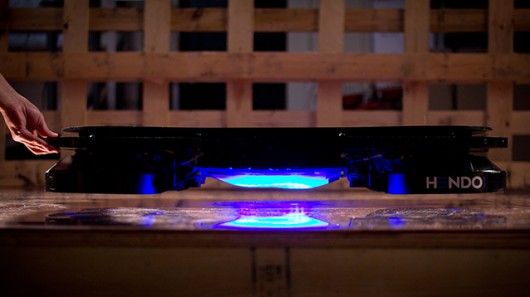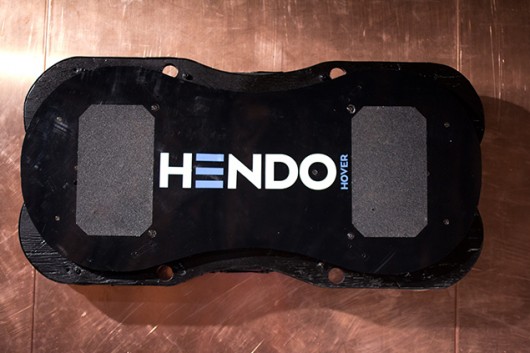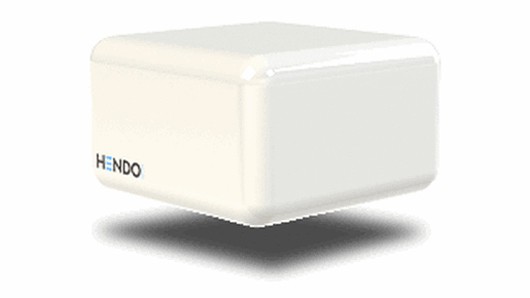Hendo Hover: The world's first real hoverboard?
October 22, 2014

The Hendo Hover is capable of running an inch off the ground using s opposing magnetic forces between the board and a metal surface
Despite many efforts to make the hoverboard a reality in the more than two decades since Marty McFly zipped around on his wheel-less ride in Back to the Future Part II, we're still waiting. Does the new Hendo Board, whose creators claim it is the "world's first real hoverboard," signal that the wait may finally be over?
Unfortunately, no. While the Hendo Board does indeed hover, and without the high-speed fans employed on the Hoverskater, it relies on technology similar to that found in maglev trains, with opposing magnetic forces between the board and the surface providing the hovering capabilities. Specifically, the Hendo Hover uses proprietary Magnetic Field Architecture (MFA) in four "hover engines" mounted under the board to enable it to float an inch off the ground with a rider on board.
While it's intended the rider will provide propulsion in the usual skateboarding manner, the system used to stabilize the 100-lb (45-kg) Hendo Hover can also be used to drive the board forward by altering the forces projected on the surface below.
The use of magnetism means that rather than riding over pavement, the board is currently restricted to levitating over a surface made of a non-ferromagnetic conductor, such as copper or aluminum. This is why you’ll notice the ramp used in the video below is not of your typical backyard plywood design. Additionally, the batteries in the current prototype are only good for less than 10 minutes of hover time. It's also very loud.
Despite these shortcomings, the Hendo Hover has achieved at least one of the main aims of husband and wife inventor team Greg and Jill Henderson, which isn't primarily to create a hoverboard. Rather it's intended to draw attention to and demonstrate the technology behind it, which the Henderson's believe could eventually be used to make buildings better able to withstand earthquakes or floods by floating them out of harm's way.
To this end, the team's Kickstarter campaign not only offers backers a Hendo Hover, but also a Whitebox Developer Kit designed to get the technology into the hands of the people, who after taking apart and playing with the engines, may find other uses or applications for it.
The kit packs scaled-down versions of the four hover engines found on the board into a white box that can be can be steered left, right, forward and back, and rotated around its own axis via an iOS or Android mobile device. The box comes with a hover surface and is powered by a set of rechargeable LiPo batteries that give 12 to 15 minutes of hover from a two-hour charge.
The Henderson's are well on the way to achieving their campaign goal of US$250,000, which will go towards finalizing the Hendo Board design, putting it into production and creating places to ride it. The Whitebox developer kit can be had for a pledge of $299, while the Hendo Hoverboard sits at the $10,000 pledge level. However, only 10 prototype boards were on offer and all have already been snapped up. If all goes to plan, the Whitebox developer kit will be shipped to backers from July 2015, with the Hendo Hovers slated for delivery in October 2015.
Video of the Hendo Hover being tested on the specially made metal half pipe can be seen below.
Source: Hendo Hover

